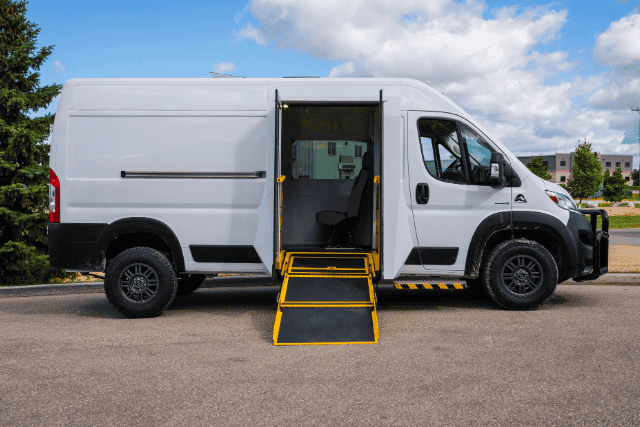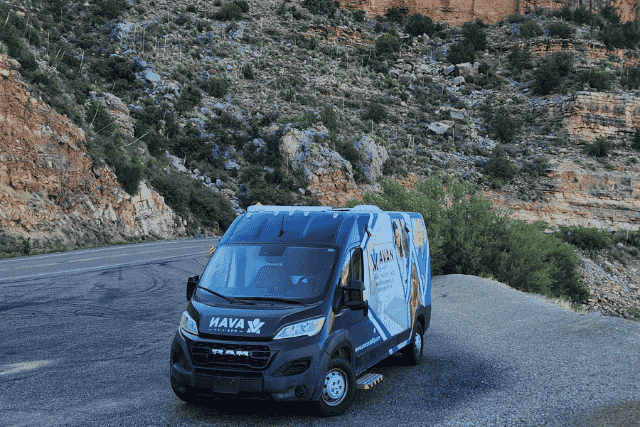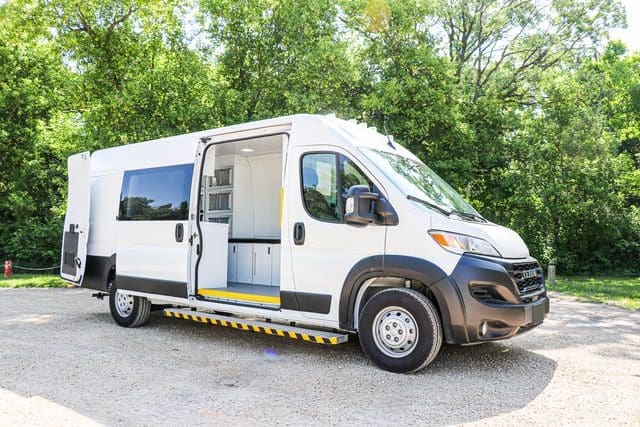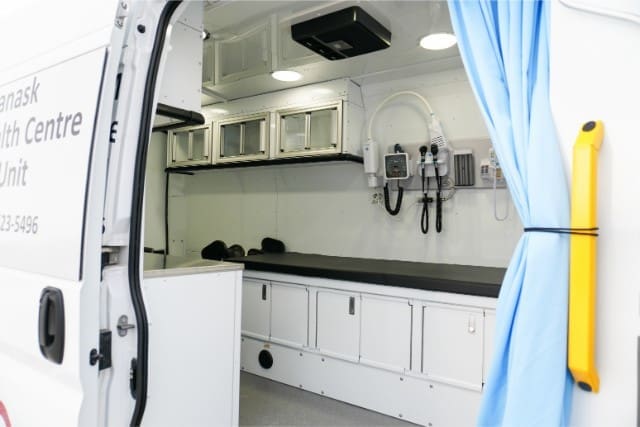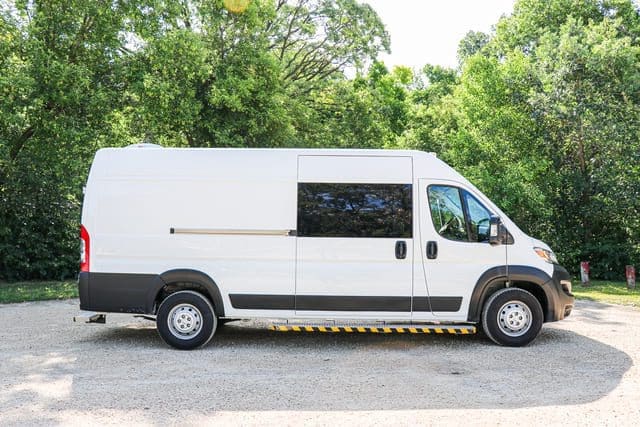Oklahoma’s mental health crisis has the state ranking near the bottom in the country for mental health care access. That means thousands of people across the state are struggling and can’t get the help they need. If you’re part of a mental health organization in Oklahoma, you’re already feeling that weight. You’re doing everything you can, but the system makes it hard.
You’ve seen the long waitlists. You’ve watched people miss appointments because they had no ride. Maybe your team is burned out. Maybe you serve rural communities where clinics are few and far between. No matter what, the gap is clear. People need mental health care, but it’s out of reach. And when that care never comes, the result is serious, leading to:
- Lost lives
- Suffering communities
- Families carrying the burden for years
But it doesn’t have to stay that way. There’s a better way to meet people where they are and bring hope with you when you show up. That’s where a Mobile Counseling Van can make all the difference.
At AVAN Mobility, we build mobile medical vans that help reduce barriers to healthcare. We’ve helped organizations like yours and Pacific Clinics across the U.S. create customized vehicles that truly save lives. While we know we’re not the only option out there, 10 years of experience in the industry has helped us learn what works and what doesn’t.
In this article, you’ll learn:
- What Oklahoma’s mental health crisis really looks like
- How mobile counseling vans work
- How mobile therapy can help you fill the gap
- What to think about before starting a mobile counseling center in Oklahoma
What does Oklahoma’s mental health crisis look like?
Oklahoma’s mental health crisis results in more than 592,000 adults in the state living with a mental health condition. That’s a huge number of people who are struggling every day. But getting help isn’t easy.
Here’s why it’s so hard to get mental health care in Oklahoma:
Shortage of mental health providers: Every county in Oklahoma is considered a mental health shortage area. That means there just aren’t enough doctors or therapists to help everyone who needs it.
The wait is way too long: About 40% of mental health providers say people have to wait more than a week to get an appointment. Some folks wait a whole month or more.
Insurance doesn’t always help: Even if someone has insurance, it might not cover mental health care. Only about 30% of providers accept major insurance plans. That means people often pay a lot out of pocket.
People in rural areas have it even harder: In many small towns, there are no nearby clinics or doctors who can help. People may have to drive for hours to get care.
Because of all these problems, many people in Oklahoma simply go without mental health care. This makes their mental health even worse. They might struggle at work, in school, or at home. Some people even end up in the emergency room or jail. The system is broken, and it’s hurting real people every day.
We need better, faster ways to help people before it’s too late, and that’s why our team at AVAN Mobility started manufacturing Mobile Counseling Vans, which you’ll learn about next.
How can the Mobile Counseling Van help solve Oklahoma’s mental health crisis?
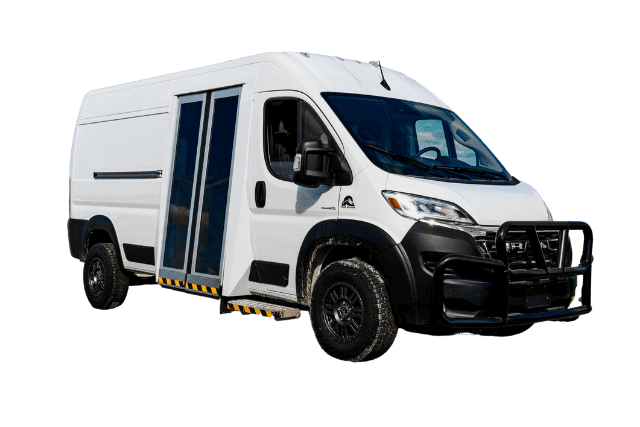
Now that you’re aware of how tough it can be to get proper mental health care, let’s look at a solution: the Mobile Counseling Van.
Think of it like a living room on wheels. It’s private, quiet, and welcoming. For many people, going into a mental health clinic can feel scary. They might worry about who sees them walking in, or they might feel judged by someone sitting in the waiting room. That fear keeps many people from getting help.
The Mobile Counseling Van makes it easier. It eliminates transportation barriers, and there are no waiting rooms, no big buildings, and no fear of being seen. It offers one-on-one, face-to-face help in a safe and private space.
It’s perfect for rural towns, busy cities, or anywhere in Oklahoma where people struggle to get care. This van meets people where they are, both emotionally and physically.
Mobile Counseling Van features
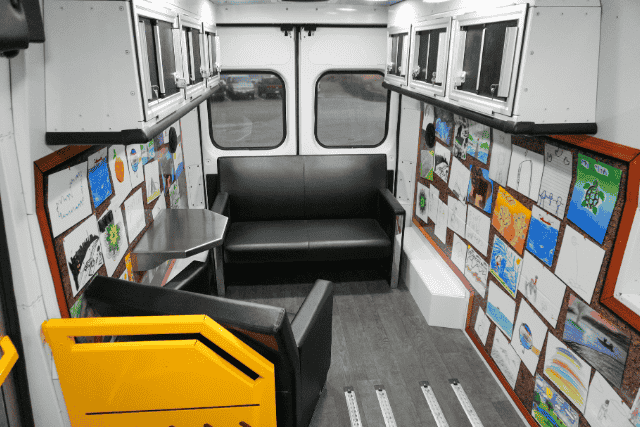
| Feature | Why it matters in Oklahoma |
| Tinted windows | Keeps sessions private, even in public places. |
| Security system | Keeps people safe during care, especially in rural or high-traffic areas. |
| Sound and temperature insulation | Makes the space quiet and comfortable, so no one hears outside noise or conversations. |
| Wood grain flooring | Makes the space feel warm and less like a clinic. |
| Removable seats | Adds more room for supplies or makes space for different needs. |
| WiFi connectivity | Helps connect with records or do virtual sessions if needed. |
| Side-entry door with ramp | Makes it easy for people with wheelchairs or walkers to come in. |
| Lots of windows and an optional skylight | Adds natural light to help people feel calm and relaxed. |
| Optional ventilation system | Keeps the air fresher and cleaner inside the van. |
| Work table | Gives space for note-taking, forms, or using a laptop. |
| Comfortable couches | Feels like home, helping people open up and feel at ease. |
With a Mobile Counseling Van, your organization can bring private, safe, and stigma-free care to people across Oklahoma. It’s a simple but powerful way to close the gap and help people feel seen, heard, and supported.
How does mobile therapy help in Oklahoma?
Mobile therapy is already making a real impact in Oklahoma. Oklahoma City’s Mobile Integrated Healthcare (MIH) program is a great example.
The Mobile Integrated Healthcare program from the Oklahoma City Fire Department gives people a better response during mental health emergencies.
Here’s how it works:
Trained professionals: Instead of always sending police or firefighters, the city now sends mental health workers, peer support staff, paramedics, and response guides.
Helps first responders focus: This allows emergency teams to handle fires, crashes, and life-threatening events.
Fully mobile vans: The city built custom vehicles to respond quickly to mental health needs. These vans are ready to meet people where they are.
Four teams working together:
- Crisis Call Diversion: Screens 911 calls to make sure the right help is sent.
- Crisis Response Team: Steps in when someone is at serious risk.
- Alternative Response Team: Helps with overdose calls or less-urgent needs.
- Community Advocacy Program: Connects people who often call 911 with long-term help.
The program runs every day from 7 a.m. to 11 p.m. and includes a full team of 27 people. Leaders are already planning to grow it.
This kind of mental health care creates better outcomes. People in crisis get help from someone trained for their exact need. At the same time, cities reduce pressure on emergency services.
If you lead a health or outreach program, a Mobile Counseling Van can help you do the same thing. You’ll bring mental health care straight to the people who need it, without delay.
5 things to consider before starting a mobile counseling center in Oklahoma
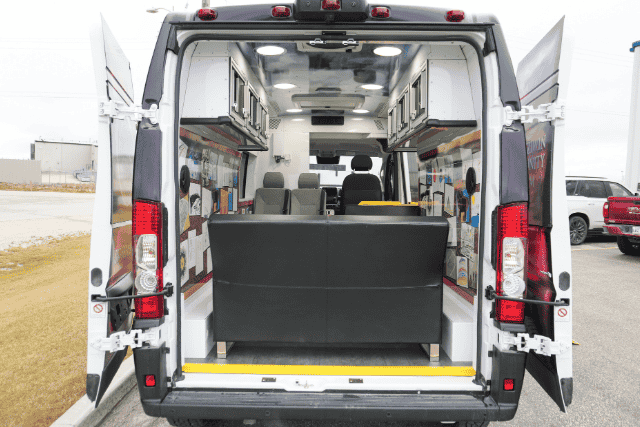
Before launching a mobile counseling center, it’s important to plan carefully. Here are a few key things to think through:
1. Who do you want to help?
Start by identifying the community you want to serve. Ask yourself:
- Are you reaching people in rural areas?
- Are you focusing on youth, adults, or families?
- Do you want to help those who are unhoused, uninsured, or facing addiction?
Knowing your audience helps shape everything else.
2. What services will you offer?
Think about what kind of counseling or support you’ll provide. Options might include:
- One-on-one therapy
- Mobile health crisis response
- Peer support
- Substance use counseling
- Family or group therapy
Make sure your services match what the community truly needs.
3. Who will staff your van?
You’ll need a strong team. That might include:
- Licensed therapists or counselors
- Social workers
- Peer support specialists
- Program managers or case navigators
Make sure your team understands trauma-informed care and can work in a mobile setting.
4. How will you fund it?
Consider how you’ll pay for the van, equipment, staff, and fuel. Options could include:
- Local or state grants
- Federal mental health funding
- Partnerships with hospitals or nonprofits
- Private donors or sponsors
Many groups start with grant support and grow from there. Check out our free guide on mobile health grants for a head start.
5. What type of vehicle do you need?
Your van should be built for mental health work. Think about:
- A private counseling space inside
- Safe, comfortable seating
- Internet access for telehealth
- Climate control for all seasons
- Easy access and ADA compliance
Thinking ahead helps you launch a program that makes a real impact, just like the one Oklahoma City has started. If you’re ready to take the next step, our team can help you get there.
Ready to tackle Oklahoma’s mental health crisis with a mobile counseling center?
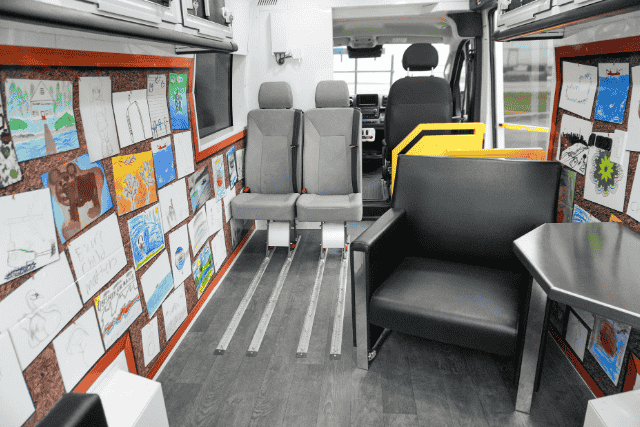
You came to this article because you’re looking for a better way to support mental health in Oklahoma. Long wait times, lack of access in rural areas, no transportation, and overloaded emergency services have made it harder to help people when needed.
After reading this, you’ve learned how a mobile counseling center can offer a powerful solution:
- It brings help directly to people, where they are
- It takes pressure off first responders and hospitals
- It creates a safe, private space for mental health care
- It works, and programs like Oklahoma City’s prove that mobile care gets results
At AVAN Mobility, we’ve helped teams like yours across America turn ideas into real, working mobile medical units. We know how to design for privacy, comfort, and function because we’ve spent over a decade building vehicles that organizations like yours use to support people in their hardest moments.
Our experience means fewer surprises for you and better care for the people you serve. If you have any questions, click the button below to talk with one of our mobility experts.
Not quite ready to connect yet? We’ve got more helpful resources for you to explore.
Start by learning a little more about mobile mental health clinics.
After that, you might also be trying to decide between a smaller van or a bigger RV. Learn more about that in our comparison article.
